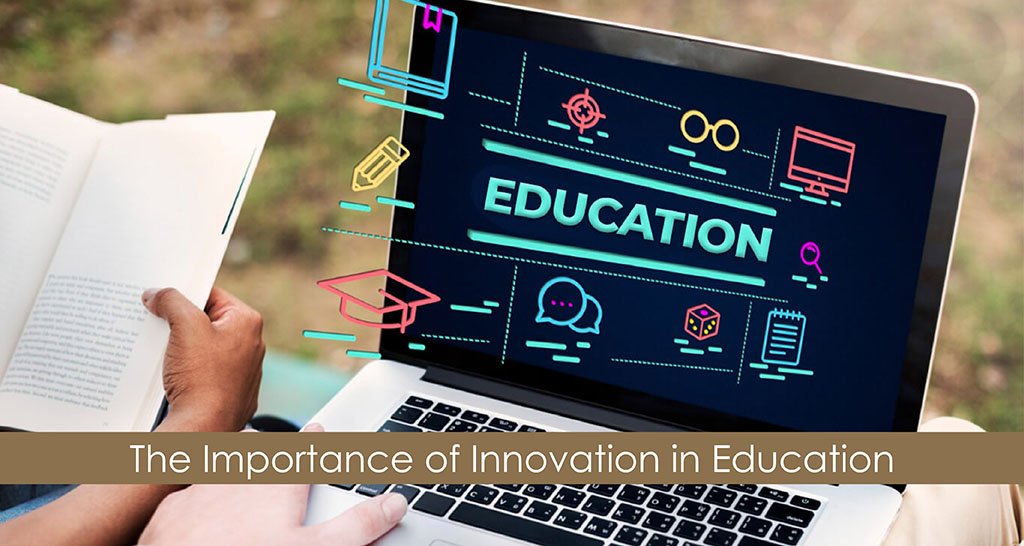The term “innovation” is one of those buzzwords we like to use whenever we have the chance. To innovate is to bring about change or to approach something in a novel manner. It is not necessary to create anything to innovate. Creativity and flexibility are essential ingredients in the invention. There is no one agreed-upon definition for “innovation” in education. An attitude open to looking at issues with fresh eyes and addressing them in various and novel ways is essential to the spirit of innovative education. It is an admission that we do not know everything and are willing to try new ways of doing things to improve, such as developing novel techniques to instruct students and transferring information.
Education may be innovative in the following ways:
- Recognizing that students benefit more from a flipped classroom, in which they view lectures at home and complete assignments in the classroom, students are allowed to watch lectures at home.
- Increasing the use of technology in classrooms to create “blended” learning environments in which students have similar experiences with technology as they would in the workplace or other real-world settings.
- Powerful video capabilities should be made available to improve the clarity and quality of communication between the parents of students attending different school districts.
Regarding education, innovation comes from recognizing difficulties, observing and learning from others to build new means of addressing these challenges, and iterating on these techniques when the outcomes of tests do not necessarily guarantee to provide you with the desired outcomes.
The Importance of Innovation in the Field of Education
The significance of educational innovation is a rather nebulous topic that may be interpreted in various ways depending on the individual asked about it. Nevertheless, there are very real and practical advantages to be gained by implementing innovation in educational settings. Students may have their innovative thinking encouraged and developed via inculcation rather than assessment or grading. Because of the prevalence of high-stakes testing in today’s educational system, it may be challenging to encourage creative thinking and innovation in the classroom. However, to emphasize the significance of innovation in the classroom, the following are various ways that innovation may be introduced…
Students will be challenged when they are presented with an issue that is not only real but also interesting:
There is not a single project that is appropriate for all of the students. This indicates that a project must be adaptable enough for students to include their interests. It also implies that instructors must be aware of their pupils’ interests. When attempting to solve issues without solutions listed in the back of a book, one must demonstrate authenticity by using basic tools. The ideal issues entail establishing some broad criteria and tools, but the student is responsible for determining how the problem is specifically defined. One project that falls within this category may be titled “Design a musical instrument that you can play without using your mouth or your hands.”
Provide students with a concise overview of the material they need to know:
For students to start their projects, you must provide them with fundamental facts and expertise. On the other hand, the quantity of knowledge necessary for the class will be far less than what you would anticipate. You may break this knowledge into orderly chunks between five and ten minutes each and then present these chunks as a mini-lesson at the beginning of the class.
Motivate students to carry out independent research by:
If the assignment’s design is straightforward and logical, students can get most of the material they need via independent study. This study may use Wikipedia, online discussion forums, documentation for computer languages, sample code, and other similar resources.
Develop complicated talents in students:
Students may be encouraged to finish their work using more complicated tools. Tickle, Tynker, Scratch, and Makey Makey are just a few of the gadgets in this category. For these tools to be used routinely, the instructors and the students must get acquainted with them.
Make sure that the students have grasped the essential ideas:
Teachers must keep a close eye on the areas in which their pupils are having difficulty in a classroom where the emphasis is placed on highly customized projects. Students experience the most effective learning when they are required to work hard to solve an issue for which they are ultimately responsible. They are more likely to give up if they can pass the threshold into annoyance or perplexity. Teachers must maintain accurate records of what their pupils already know and what new information they need to acquire to finish their assignments effectively.
Make certain that students discover creative ways to utilize everyday objects:
Most individuals can only think of one use for each given item. The ability to look beyond this can be taught to students, and they can also learn how to make electric switches out of clothespins or construct a robot body out of a Coke bottle. Students will be able to stretch their creative muscles and think beyond the conventional applications of commonplace items due to this activity.
Make sure the students are aware of the things they still have to learn:
Students need to clearly understand not just what they currently know but also what they do not yet know to innovate successfully and solve challenges. Teachers should construct their projects so that students may list the aspects of their project that they understand and the aspects of their project that they need to learn better.
Students should not be graded on their originality and creativity:
Grades can function very well when just one solution can solve a certain situation. There is no one right solution for undertakings that emphasize innovation and creativity. You can’t use a grade as motivation for pupils if you want them to take responsibility for a challenge and devise a unique solution.
Promoting innovation in education encourages analytical thinking, a spirit of exploration, and an openness to adapting to new circumstances, all of which will benefit the students in the classes. It will give them the confidence and abilities required to continue adapting to new circumstances and the tools essential to manage the obstacles they will face in their future employment.












